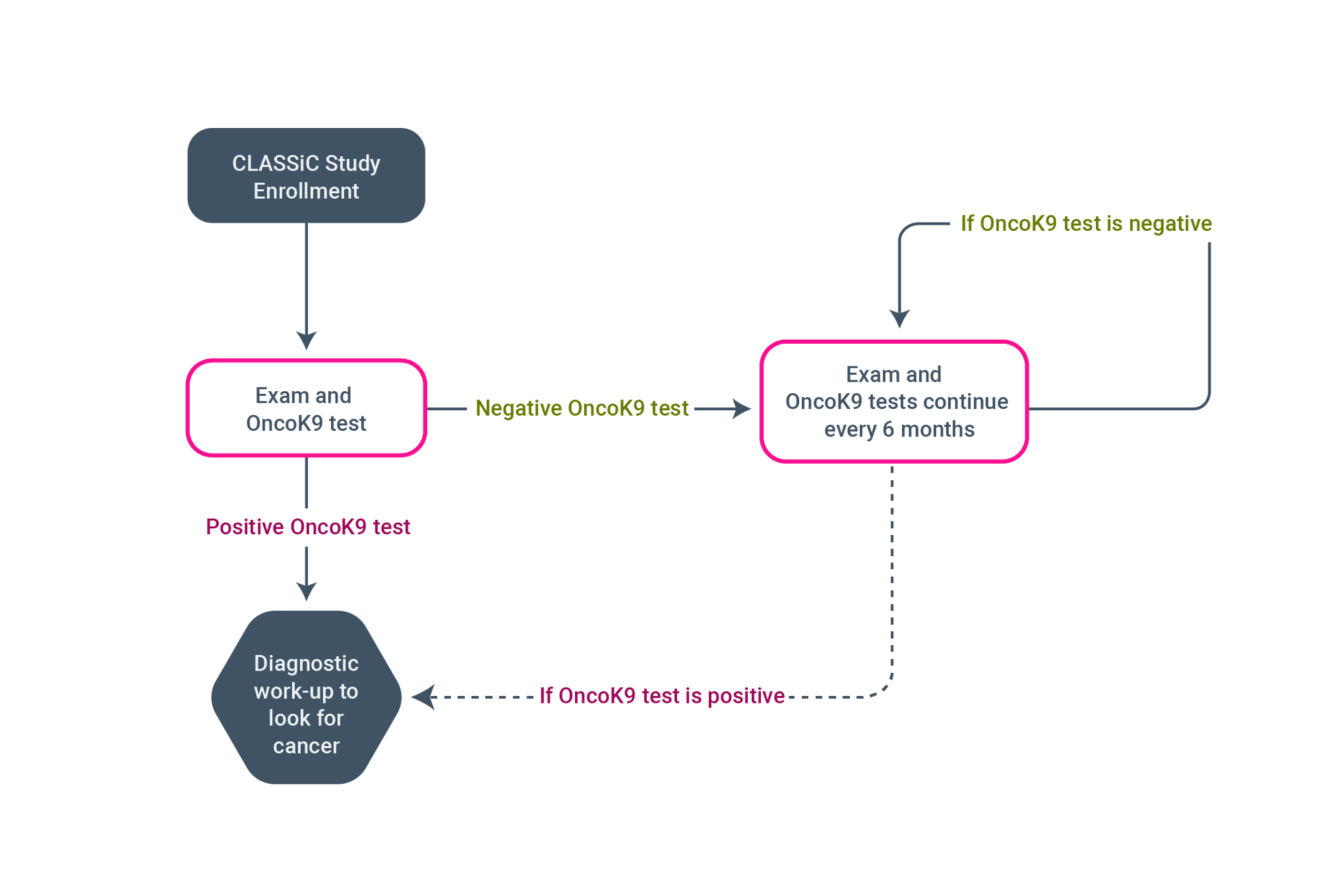Clinical trial to evaluate OncoK9 liquid biopsy test for dogs
The BluePearl Greater Philadelphia network hospitals are offering a funded study evaluating the first-in-class liquid biopsy test from PetDx in 2022.
rachaphak / stock.adobe.com

Content submitted by BluePearl, a dvm360 Strategic Alliance Partner
Current data suggest that cancer is the leading cause of death in dogs, likely a reflection of the fact that patients are commonly diagnosed at an advanced stage, which often comes with a poor prognosis.1-7 Comparative oncology using companion animals as translational models has not only improved understanding of cancer, but also can help modernize the diagnostic process and expand the treatment options for many veterinary cancers.
Liquid biopsy is a novel diagnostic technique that involves the evaluation of analytes from various biological fluids (primarily blood, less commonly urine, cerebrospinal fluid, or other secretions) that can be obtained through minimally invasive or non-invasive sampling methods.8 Common aims involve screening for circulating nucleic acids (including cell-free DNA (cfDNA) that originates in normal cells, and circulating tumor DNA (ctDNA), which originates in cancer cells), circulating tumor cells (CTCs), and associated proteins.8,9 The ability to detect cancer-related analytes from blood has many favorable attributes in cancer patients where obtaining a tissue sample for traditional histology may be challenging.8,9
Liquid biopsy may play a role in cancer screening for veterinary patients, especially in dogs at higher risk of cancer, such as dogs over age 8, and dogs belonging to breeds with a high predilection to cancer (see Figure 1). Such testing could aid in diagnosis, targeted treatment selection, treatment response monitoring, minimal residual disease detection, and monitoring for recurrence.9 PetDx offers a liquid biopsy (OncoK9 - The Liquid Biopsy Test for Dogs) that is a first-in-class, multicancer, early detection test, employing genomic analysis that leverages next-generation sequencing (NGS) technology and proprietary bioinformatics algorithms. OncoK9 identifies the underlying mutations in DNA (also called genomic alterations) that are the cause of cancer, and data suggest that the test can detect 30 types of cancer with a simple blood draw. A clinical validation study performed in more than 1,000 dogs (CANDiD Study; CANcer Detection in Dogs Study), is available as a white paper at www.petdx.com/resources.
Figure 1. Common Breeds Predisposed to Cancer

BluePearl and PetDx have partnered together on a novel clinical trial, the Cancer Lifetime Assessment Screening Study in Canines (CLASSiC study), with the aid of primary care veterinarians (see Figure 2). Dogs 8 years and older of any breed, as well as dogs 4 years and older of certain breeds known to be predisposed to cancer, are eligible to enroll and participating patients will undergo an OncoK9 liquid biopsy test free of charge, twice annually for their lifetime. If a positive test is noted, the primary care veterinarian will collaborate with the BluePearl specialty network in the Philadelphia region to diagnose the patient; the cost for the diagnostic workup is also covered by the study.
The goal of this trial is to determine if early cancer detection via OncoK9 can lead to improved outcomes for dogs, their humans, and the veterinarians who manage their care. Andi Flory, DVM, DACVIM (Oncology), veterinary medical oncologist and PetDx Chief Medical Officer, noted, “Using today's standard of care, cancer in dogs is diagnosed prior to the onset of clinical signs in only a very small minority of cases. By identifying cancer prior to the onset of clinical signs, our hope is that veterinarians will have more treatment options to be able to discuss with families, dog owners will have more time and options to manage cancer in their pet, and dogs can enjoy longer lives and maybe even higher cure rates. This is really a win-win-win situation for everyone involved.”
Figure 2. A Flow Chart Outlining the CLASSiC STUDY
Patients are enrolled into the trial by their primary care doctor. Once enrolled, an exam and OncoK9 test is performed every 6 months. If the test is negative, the patient will return in 6 months for the next assessment. If the test is positive, the patient is referred to a BluePearl Oncology clinic for a diagnostic workup to attempt to identify the cancer. This is a funded collaborative effort between BluePearl, PetDx, and primary care doctors in the Greater Philadelphia area.

References
- The Most Popular Dog Breeds of 2020. American Kennel Club. May 16, 2021. Accessed January 28, 2022. https://www.akc.org/expert-advice/dog-breeds/the-most-popular-dog-breeds-of-2020/
- Dobson JM. Breed-predispositions to cancer in pedigree dogs. ISRN Vet Sci. 2013;2013:941275. Published 2013 Jan 17. doi:10.1155/2013/941275
- Baioni E, Scanziani E, Vincenti MC, et al. Estimating canine cancer incidence: findings from a population-based tumour registry in northwestern Italy. BMC Vet Res. 2017;13(1):203. Published 2017 Jun 28. doi:10.1186/s12917-017-1126-0
- Edmunds GL, Smalley MJ, Beck S, et al. Dog breeds and body conformations with predisposition to osteosarcoma in the UK: a case-control study. Canine Med Genet. 2021;8(1):2. Published 2021 Mar 10. doi:10.1186/s40575-021-00100-7
- Phillips JC, Stephenson B, Hauck M, Dillberger J. Heritability and segregation analysis of osteosarcoma in the Scottish deerhound. Genomics. 2007;90(3):354-363. doi:10.1016/j.ygeno.2007.05.001
- Is my dog at risk for cancer? American Animal Hospital Assocation (AAHA). Accessed January 28, 2022.https://www.aaha.org/your-pet/pet-owner-education/ask-aaha/canine-cancer/
- Lymphoma. National Canine Cancer Foundation. Accessed January 28, 2022. https://wearethecure.org/learn-more-about-canine-cancer/canine-cancer-library/lymphoma/
- Heitzer E, Haque IS, Roberts CES, Speicher MR. Current and future perspectives of liquid biopsies in genomics-driven oncology. Nat Rev Genet. 2019;20(2):71-88. doi:10.1038/s41576-018-0071-5
- Chibuk J, Flory A, Kruglyak KM, et al. Horizons in Veterinary Precision Oncology: Fundamentals of Cancer Genomics and Applications of Liquid Biopsy for the Detection, Characterization, and Management of Cancer in Dogs. Front Vet Sci. 2021;8:664718. Published 2021 Mar 23. doi:10.3389/fvets.2021.664718